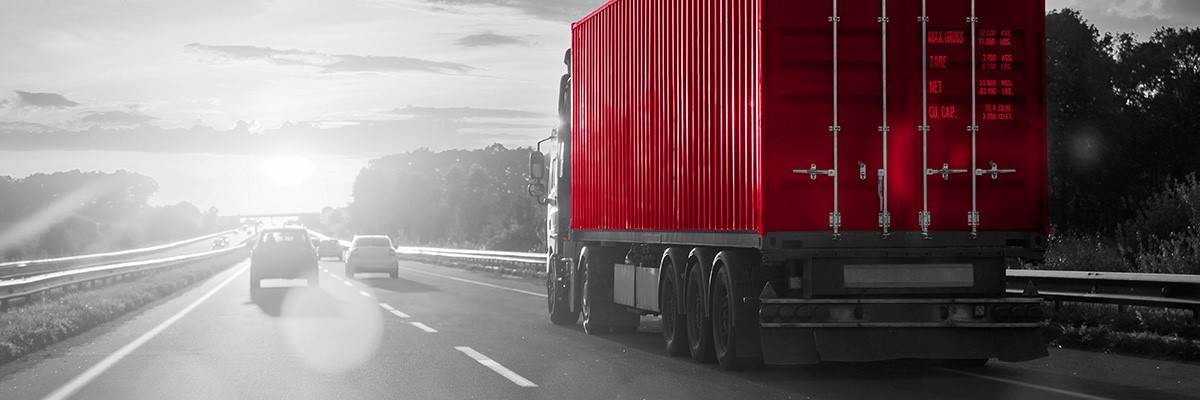Is the global transport industry on a highway to climate hell?

According to the International Energy Agency (IEA), transport has the highest reliance on fossil fuels of any sector. Although its contribution to global emissions dropped sharply when the world hit pause during the pandemic, this has risen rapidly since borders reopened and lockdowns ended. The greatest increases have been recorded in developing markets: transport-related emissions in developing countries have increased more rapidly than in Europe or North America and this is a trend that is likely to continue in coming decades.
Transitioning to clean energy is not cheap. Cost will be a significant challenge for the sector moving forward. However, as Gido van Graas, Head of ING’s Energy Project Advisory Team noted in the Atradius Clean Energy Transition: A New Way Forward for Global Trade? event: “We see that there are huge investments required to support the energy transition. I believe that the liquidity is there to support that”.
What can our underwriters tell us about clean energy transitions in the transport sector?
Our underwriters note the transport industry cannot be viewed as a homogenous whole. The industry’s subsectors face different challenges, with varying outlooks across developing and developing markets. For example, the passenger electric vehicles (EV) sector in developed economies is enjoying growth. According to the IEA, one in seven passenger cars bought globally in 2022 was an EV, compared to one in 70 in 2017. Decarbonising shipping and aviation is more complex and still requires more research and development.
Challenges: What are the most urgent challenges for the sector in the next three years?
1. Development of infrastructure is insufficient
Every Atradius underwriter we spoke to, representing a geographical spread across the world’s developed markets, pointed to insufficient infrastructure as one of the greatest risks to emissions reduction in the transport industry. In particular, a primary challenge for the transport industry is the need to expand EV charging networks to support growing consumer demand for electrification.
2. High costs are a barrier to adoption
Although our underwriters noted subsidies and tax incentives are available in some markets, this doesn’t detract from the fact that energy transition is costly. EVs remain unaffordable for many consumers and the electrification of entire fleets can put too deep a dent in many business balance sheets. Investment in other alternative energy sources, such a hydrogen, is also costly. The current economic conditions with high inflation and increasing interest rates, also makes for a challenging investment environment.
3. Some sectors are difficult to decarbonise
Aviation remains a heavily carbon-intensive mode of transport. There is a long-term need for further investment in technology and alternative fuels for the sector. Although the shipping industry can reduce emissions through the use of low-sulfur-compliant bunker oil or cleaner alternative fuels, the cost of these are still higher than heavy bunker fuels. Smaller players are more vulnerable to the increased costs and their survival may depend on their ability to pass on costs to customers.
Opportunities: What are greatest opportunities for the sector in the next three years?
1. Access to financing and government incentives
Several of our underwriters pointed to the availability of financing and subsidies as a clear opportunity for growth, particularly in the US and Europe. Our underwriters in Germany and the Netherlands noted that government stimulation programmes and tax advantages were widely available.
2. Development of alternative fuel sources
New energy such as clean hydrogen and bio-fuel is becoming an increasingly important element in supporting energy transition in the transport industry and presents great opportunities for growth. Our underwriting team in Japan explained how this extends to the aviation sector. They said: “Japan Airlines (TYO: 9201) has already set a goal to become the leading airline in the use of SAF (sustainable aviation fuel) and plans to replace 10% of fuel on board by 2030.”
3. Growth of the EV sector
The EV sector is enjoying growth with global demand presenting opportunities along the entire value chain from chip producers to materials manufacturers and OEMs. Our underwriters in China said: “China accounts for about half of global EV sales and will benefit from the global transition towards EVs as well growth in the domestic market which is currently dominated by local brands.”
Where next?
Lowering greenhouse gas emissions in the transport industry is not just about transitioning to clean energy sources. Reshoring industries, bringing them closer to their markets, can help to reduce freight miles. Digitalisation may also bring about freight transport efficiencies and help to reduce statistics such as reported by the US Bureau of Transportation Statistics that revealed one in four trucks that ran empty in the US in 2019. Applying the concept of the circular economy could also help decarbonise the transport industry, reducing the volume of tyres that end up in landfill each year for example, although this still has a way to go.
Related documents

112.0KB PDF
